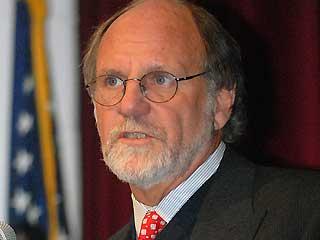
MOUNT LAUREL, N.J. - Gov. Jon S. Corzine closed an affordable housing law loophole that has troubled advocates for the poor for more than two decades when he signed a revamped housing law on Thursday. Under the law, suburban towns will no longer be able to pay cities to provide their share of housing for low-income people.
Advocates for the poor said at a ceremony Thursday that the law finally opens the suburbs to the state's poor and minority residents as the state Supreme Court intended with its 1975 Mount Laurel decision. "This arrangement has been inherently unfair, for it concentrates the poor in the most impoverished cities," said the Most Rev. Joseph Galante, the Roman Catholic bishop of Camden, "locking them into enclaves of disadvantage, out of sight and out of mind, with jobs and opportunity out of reach."
David Rusk, a Washington-based urban policy consultant, called the revamped housing law the most significant one in the nation in the last 20 years. But critics say the bill, coupled with some new affordable housing regulations, won't help the poor, will cost taxpayers and may force suburban communities to put up housing on soccer fields and parks.
Assemblyman Scott Rumana, a Bergen County Republican, called the legislation extremely detrimental. "It is truly the greatest negative impact on the environment and a massive accelerator to property taxes that we have ever seen," he said.
Affordable housing has been a major issue for decades in New Jersey, one of the nation's most expensive places to live. In a series of decisions in the 1970s and '80s, New Jersey's Supreme Court outlawed zoning aimed at keeping out the poor and required communities to have plans that include space for low-income residents. The rulings, known as the Mount Laurel decisions after this suburban town that resisted making room for the poor as development took off starting in the 1960s, are held up by advocates for the poor as landmarks in social justice. Others see them as a chief example of improper judicial activism.
But the political and bureaucratic implementation of the court's wishes has been hairy. Under the Fair Housing Act of 1985, the state calculates each town's obligation, the number of affordable housing units it is responsible for providing. If towns do not file plans that meet the state requirements, they can be sued by land developers. When builders win in court, they get the right to put up homes at a higher density than otherwise would be allowed. Officials in some communities blame those lawsuits for encouraging suburban sprawl.
Kevin Walsh, associate director of the Fair Share Housing Center, said the approach has led to about 40,000 affordable homes in New Jersey's suburbs over the last 23 years, far fewer than advocates say are needed. Another 10,000 or so homes for low-income people have gone up in the cities through the regional contribution agreements that were banned on Thursday, Walsh said.
Walsh and other advocates for the poor despised the agreements, arguing that they undermined the purpose of affordable housing, which is to deconcentrate poverty and provide homes with better access to jobs and quality schools. "I know this will make a difference in tens of thousands of people's lives," Corzine said.
The law also committed the state to paying $20 million per year to help urban areas pay for housing and set up a 2.5 percent fee for commercial developers to pay for low-income housing in the suburbs. It also requires towns to provide housing for the very poor, including some earning less than 30 percent of the area's median income. The law hardly settles the state's affordable housing debate.
This week, there have been at least two lawsuits filed to try to help towns satisfy their affordable housing obligations more
Source: NewsDay.com